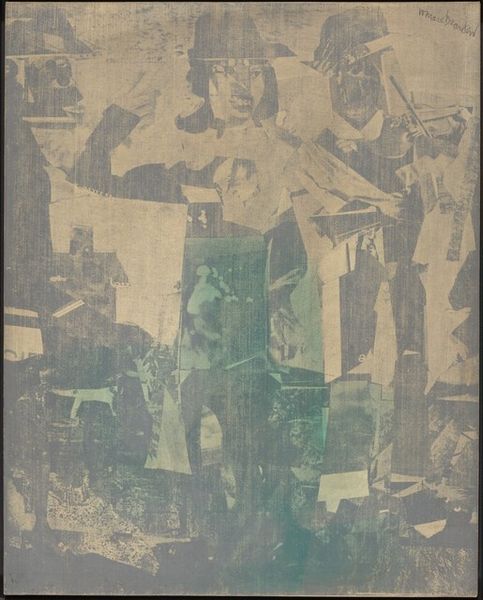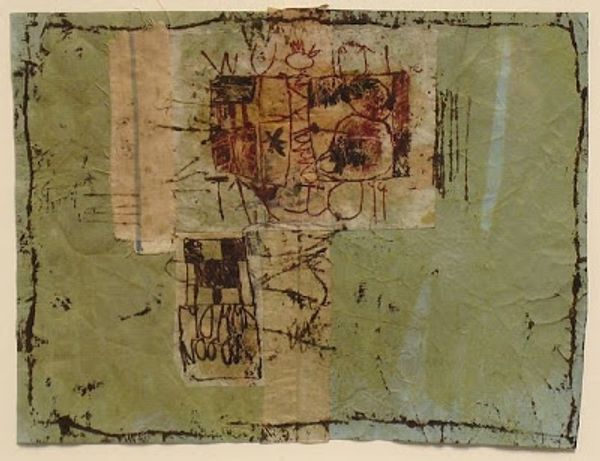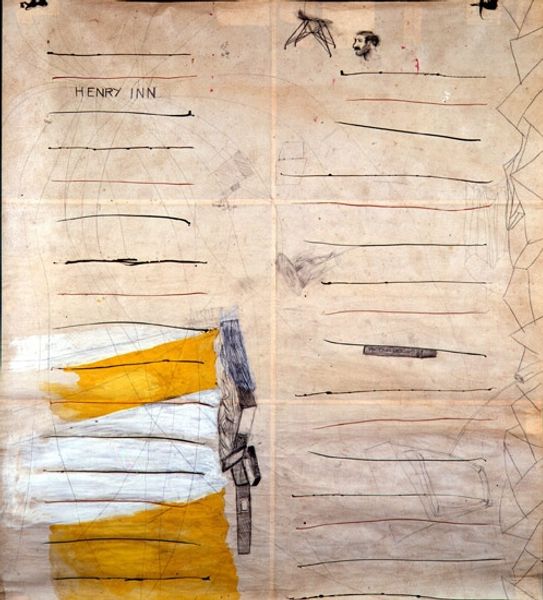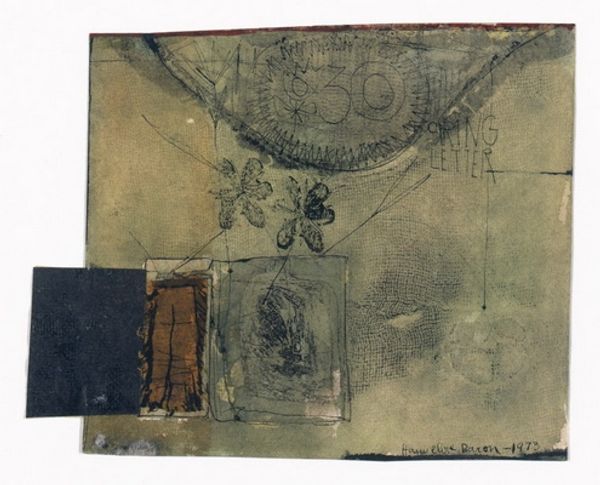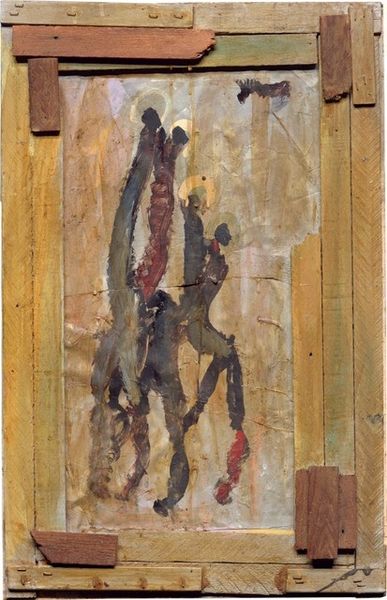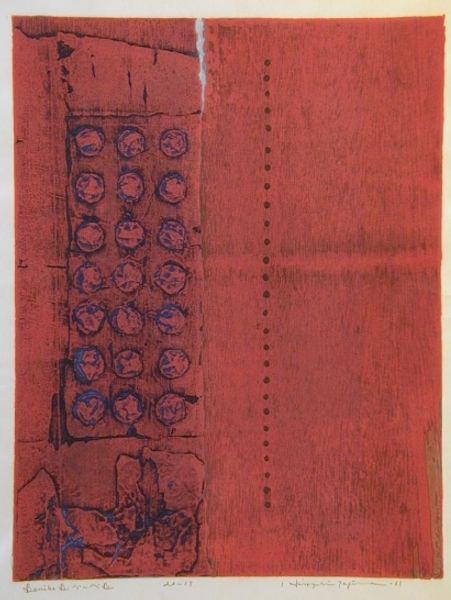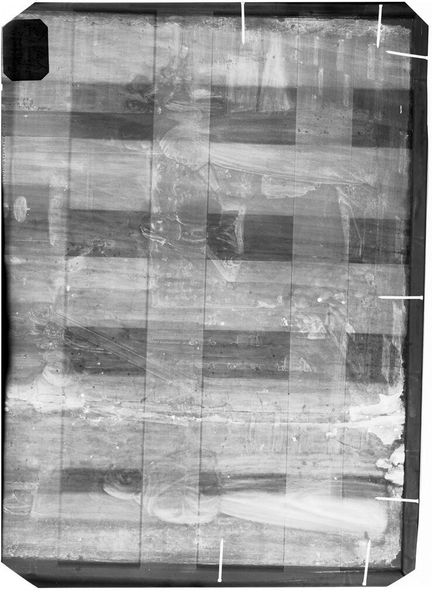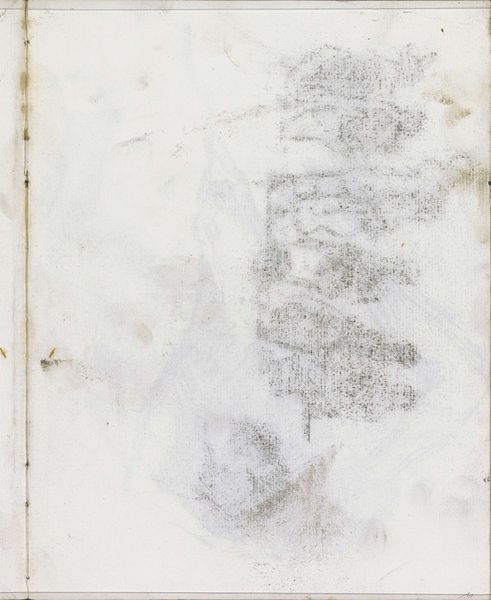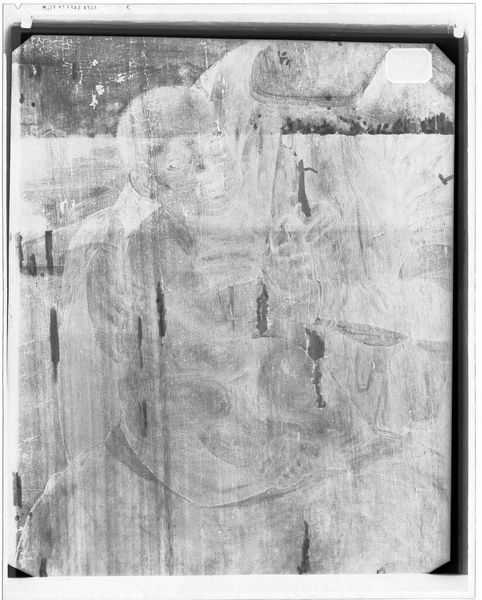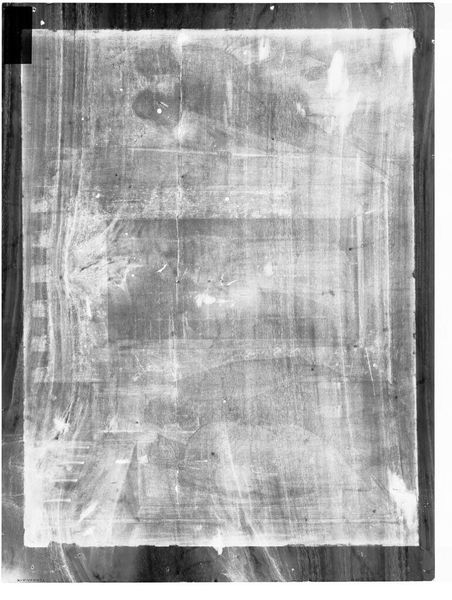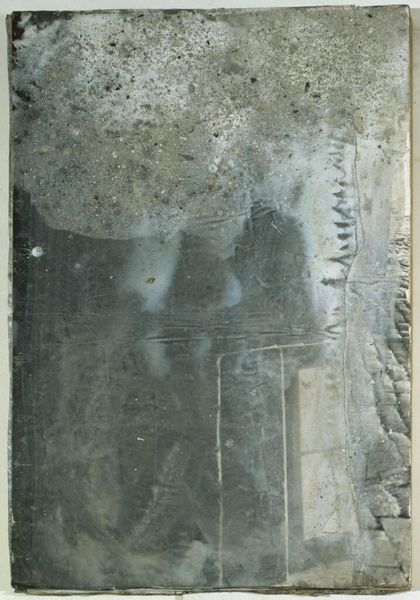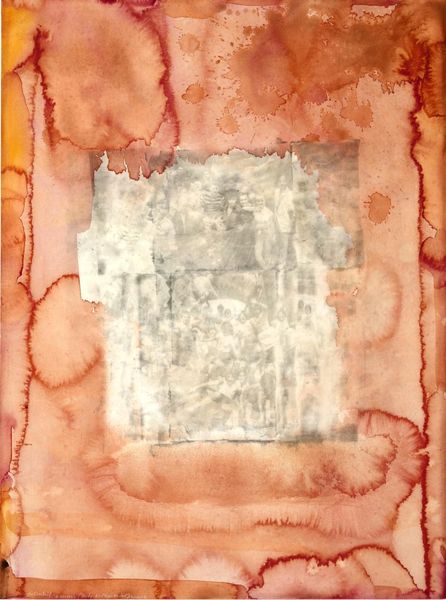
#
neo-dada
#
black-mountain-college
Copyright: © 2019 Robert Rauschenberg Foundation. All right reserved.
Editor: So, this is Robert Rauschenberg's "Blue Urchin" from 1974, and it's a mixed-media piece. At first glance, it feels almost like looking at fragmented memories. It’s very textural and layered. What do you make of it? Curator: For me, Rauschenberg's work always feels like wandering through someone's subconscious. There's this dreamy quality, like catching glimpses of things half-remembered. I’m curious—does it feel haphazard to you, or is there a structure you can discern? Editor: I see a structure now that you mention it, almost like horizontal bands. There’s the pale blue at the top, then a kind of muted middle ground. What is it about this layering that you find so compelling? Curator: Well, he's pulling from all corners of his life, or at least, it appears that way, isn’t it? Everyday images elevated and mashed together to create, well, something utterly new. Pop Art's rebellion against the precious, taken to this fascinating extreme. And the fact that it's textile-based? It blurs boundaries, between painting and sculpture and what exactly art can be. The materiality becomes incredibly important, almost tangible. Editor: It makes you wonder about the stories behind those fragments, right? Personal history colliding with the historical moment. Curator: Exactly. Rauschenberg invites you to co-create the meaning. What will *you* piece together from these shards of imagery? What does the “blue urchin” become in *your* mind’s ocean? Editor: That’s powerful, the idea that we’re actively participating in the art-making. It makes the whole experience so much more personal, less… distant. Curator: Absolutely! Rauschenberg wasn’t about handing you a neat, pre-packaged answer. He gave you the puzzle pieces and nudged you to find the poetry in the chaos.
Comments
No comments
Be the first to comment and join the conversation on the ultimate creative platform.
